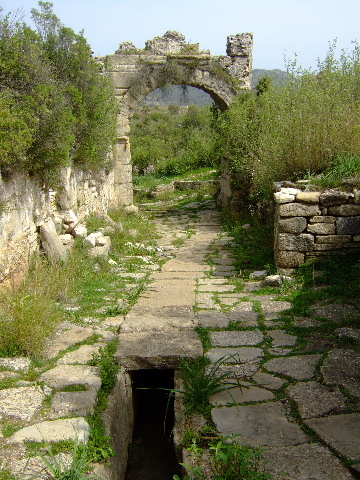- according to the historians : tarihçilere göre
- the city was under the rule of... : şehir ... -in egemenliği altındaydı
- starting with 6th century B.C. : M.Ö. 6. yy'dan başlayarak
- ... lived its the most magnificent days while it was... : -iken en muhteşem günlerini yaşadı
- the main gate of the city : şehrin ana kapısı
- that has a marvelous craftsmanship : harika bir işçiliği olan
- between two towers : iki kule arasında
- there are two main streets in... : -de iki ana cadde var
- the biggest historical ... of Anatolia : anadolunun en büyük tarihi ...
- on the opposite side of... : -in karşı tarafında
- can be visited : ziyaret edilebilir
- passing through a wide street : geniş bir caddeden geçerek
- the bazaar place of the city : kentin pazaryeri
- is surrounded with : ile çevrili
- are lined on three side of it : üç tarafında ... sıralanır
- on the south part of : ,-in güney bölümünde
- turned into a museum today : bugün bir müze haline getirilmiş
- displays the most beautiful archeological collection of the region : bölgenin en güzel arkeolojik koleksiyonunu sergiler
Side (Greek:Σίδη ) was an ancient Luvi city in Anatolia. According to the historians Side was founded in 1405 B.C. And the city was under the rule of Lidians, Persians, Alexander, Antiogonos, Ptolemaios starting with 6th century B.C.
 |
| Temple of Apollo Kaynak:Georges Jansoone |
Side lived its the most magnificent days while it was bishopric center in 5th and 6th centuries A.D. The main gate of the city that has a marvelous craftsmanship, is between two towers. There are two main streets in Side. There is Nymphaeum, the biggest historical fountain of Anatolia, on the opposite side of city gate, outside the walls. After the theatre is left behind a monumental structure can be visited passing through a wide street. The bazaar place of the city, agora is surrounded with porticos and shops are lined on three side of it.
 |
| The Great Gate kaynak:G.Jansoone |
On the south part of the agora, Gymnasium that has three saloons and surrounded with porticos, is on the street. A big Roman Bath turned into a museum today and displays the most beautiful archeological collection of the region.


